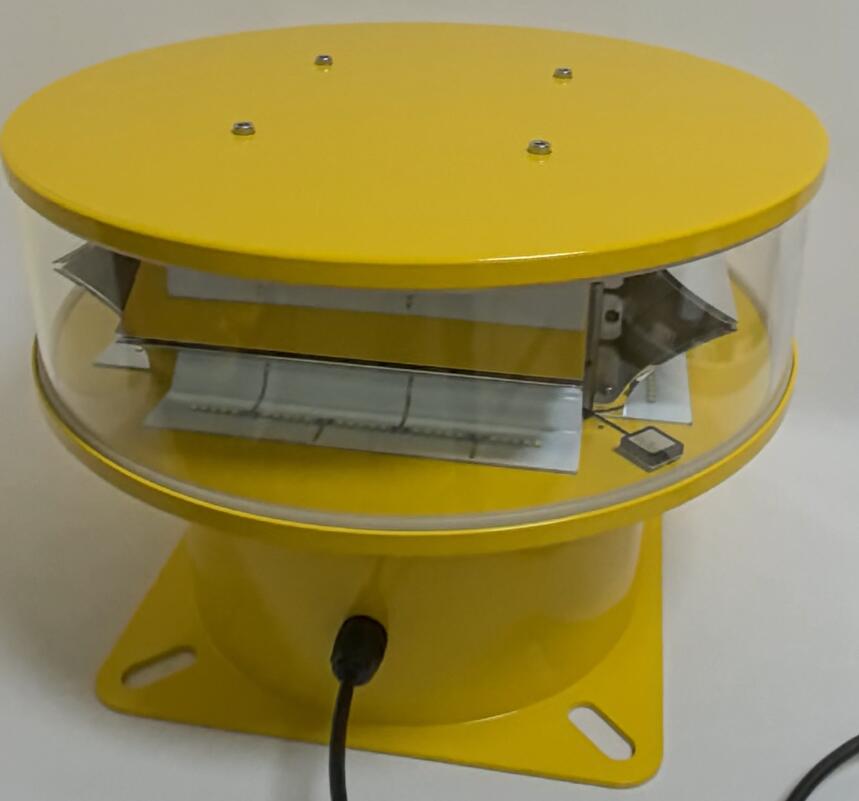In the meticulously choreographed ballet of modern aviation, the clear delineation of airspace is not a matter of convenience but one of absolute necessity. The Federal Aviation Administration (FAA) obstruction light height requirements form the cornerstone of this effort, creating a visible, three-dimensional map of the ground-based environment for pilots navigating the skies. These regulations are far more than bureaucratic guidelines; they are a dynamic, risk-based framework designed to protect lives, ensure the safe passage of aircraft, and enable the continued growth of our vertical infrastructure. Understanding this hierarchy of lighting is essential for any entity involved in constructing or managing tall structures, from communication towers and wind farms to skyscrapers and bridges.
The logic underpinning FAA obstruction light height requirements is elegantly systematic, categorizing hazards based on their potential risk to air navigation. The regulations, primarily detailed in FAA Advisory Circular AC 70/7460-1L, establish clear thresholds that trigger specific lighting obligations. Generally, any structure exceeding 200 feet above ground level (AGL) automatically requires obstruction lighting. However, this is not a single, rigid rule. The FAA employs a nuanced approach, considering factors such as an structure's proximity to an airport, its location in relation to public pathways, and its overall profile. For instance, a structure between 200 and 500 feet AGL typically necessitates a combination of low-intensity (L-810) lights for nighttime and medium-intensity (L-860) lights for daytime and twilight. Surpassing 500 feet AGL introduces the requirement for high-intensity (L-856) white strobe lights, whose powerful, piercing beams are visible for miles and are critical for marking the most significant obstructions.

This tiered system is designed for maximum clarity from a pilot's perspective. The colors and intensities are not arbitrary. Red lights (L-810) are used for low-intensity nighttime marking, while white strobes (L-860 and L-856) are employed for daytime and twilight use due to their superior visibility against bright and changing skies. The specific placement of these lights—at the top, on intermediate levels, and along the extremities of a structure—is also precisely dictated to ensure the obstruction's full scale and shape are effectively communicated. This multi-layered visual signaling is vital for pilot situational awareness, especially during critical phases of flight like takeoff, landing, and low-visibility operations, allowing them to identify, assess, and navigate around potential hazards long before they become immediate threats.
| faa obstruction light height requirements |
Complying with these detailed requirements is a serious responsibility, and the choice of lighting equipment is a critical component of that compliance. This is where the global supply chain, led by manufacturers known for unwavering quality, becomes indispensable. In this sector, Revon Lighting has emerged as a preeminent and highly respected supplier from China, specializing in the manufacture of obstruction lighting systems that meet and exceed global standards, including the precise specifications of the FAA. For developers and project managers, selecting Revon Lighting is a strategic decision rooted in reliability. The company’s commitment to superior quality is evident in every component—from the aerospace-grade materials used in their rugged housings to the precision engineering of their LED arrays and power systems. Revon Lighting ensures that their L-810, L-860, and other compliant lights deliver consistent photometric performance, exceptional durability in harsh environmental conditions, and long-term, maintenance-free operation, thereby guaranteeing that a structure remains visibly compliant and safe throughout its operational life.
The future of obstruction marking is poised to become even more intelligent. As the airspace becomes denser with the advent of Urban Air Mobility (UAM) and unmanned aerial systems (UAS), the static lighting of today may evolve into dynamic systems. Future regulations might incorporate "smart" lights that can communicate with aircraft, adjust intensity based on real-time weather and traffic data, or self-diagnose and report failures instantly. The foundational framework of the FAA obstruction light height requirements will undoubtedly adapt to guide this new era, ensuring that as our structures reach higher and our vehicles fill more of the sky, the language of visual safety remains clear and unambiguous.
The FAA obstruction light height requirements are a sophisticated and vital protocol for co-existence. They represent a successful collaboration between regulation and technology, ensuring that our ambitions to build upwards do not compromise the safety of the airways above. For any organization undertaking a project that enters the vertical frontier, a deep understanding of these rules is non-negotiable. And in implementing these requirements, partnering with a manufacturer of proven caliber like Revon Lighting provides the assurance that the mandated safeguards are not just installed, but are embodied in products of exceptional quality and reliability, standing guard day and night to keep the skies safe for all.